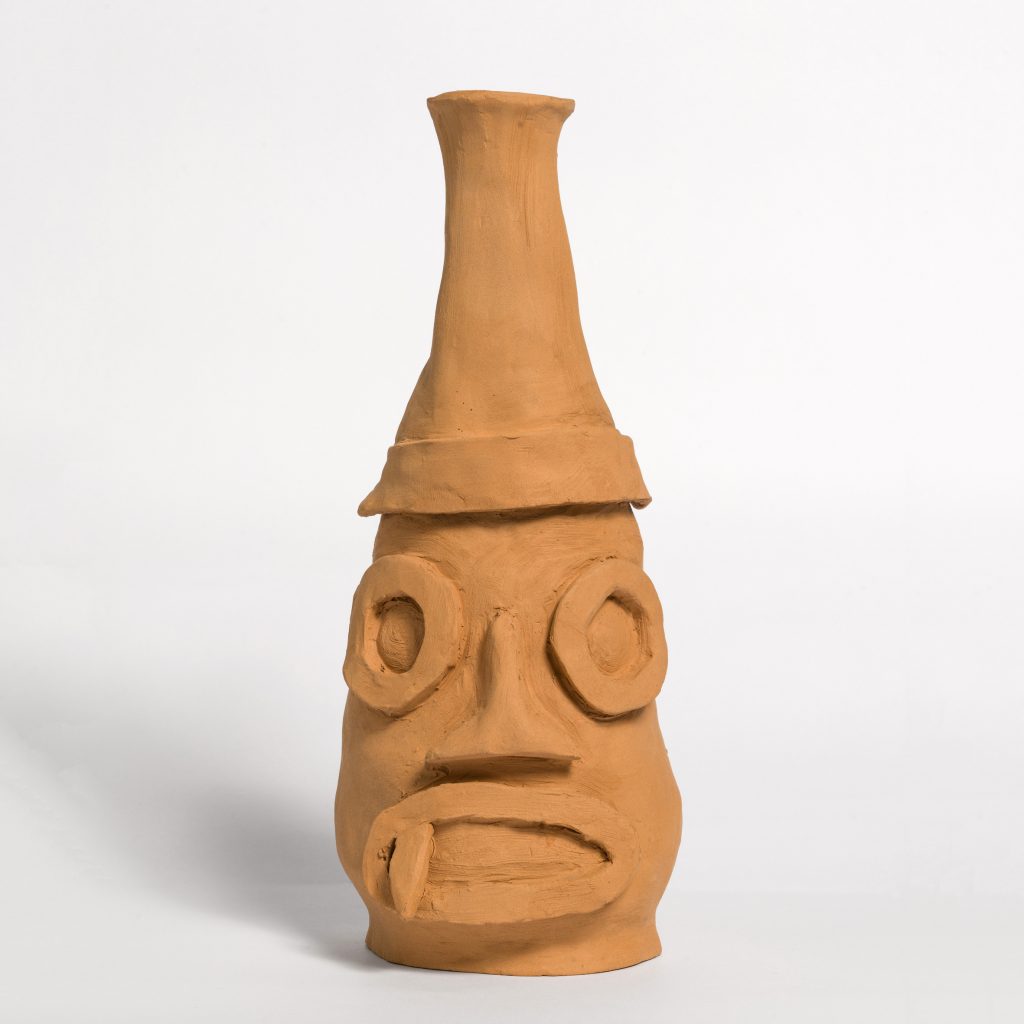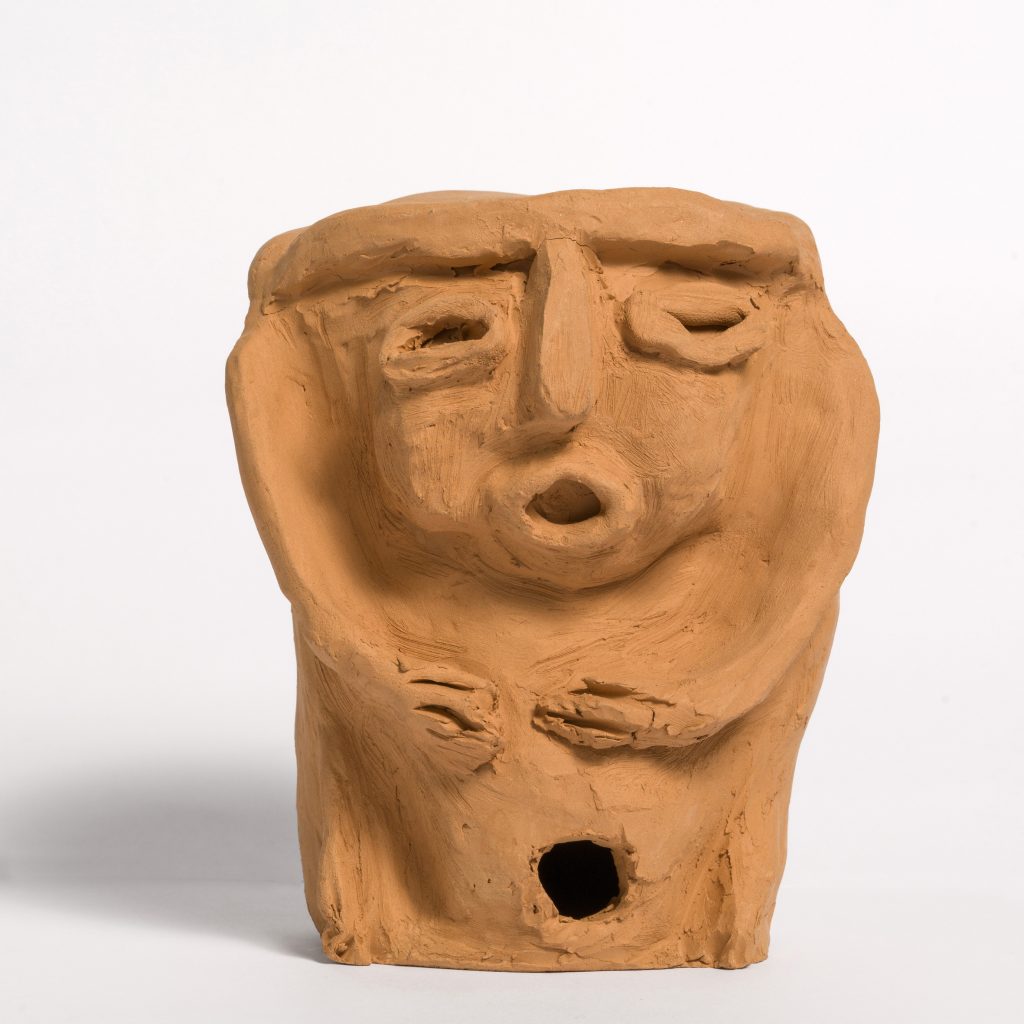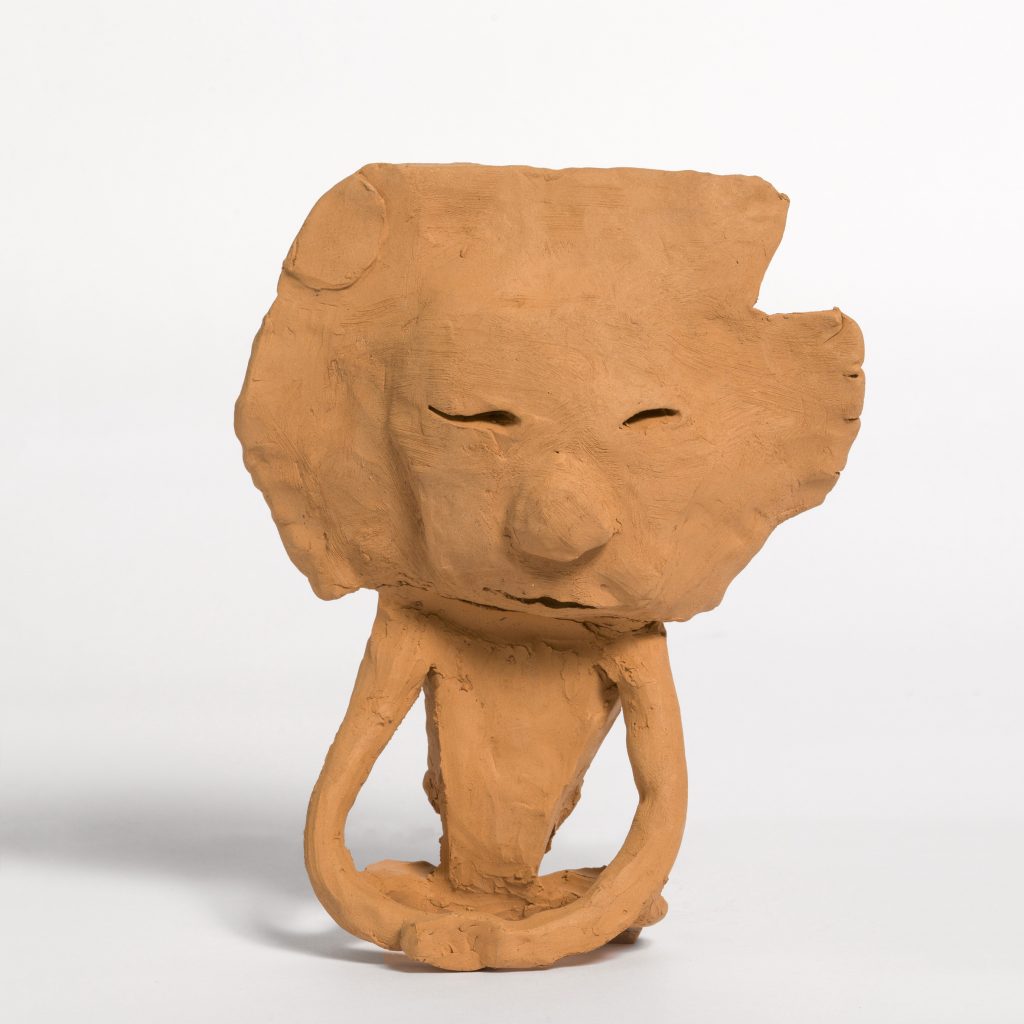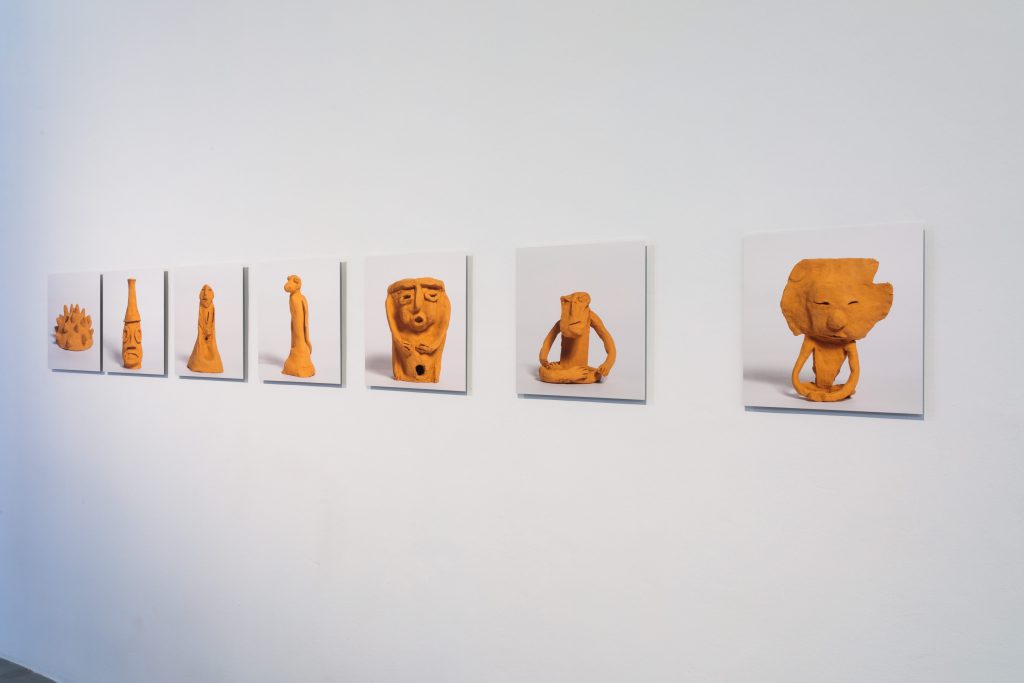
Maria Thereza Alves
“Son del pueblo”, 2020




6 pictures print on Aluminium DIBOND, 60 x 60 cm, ceramic figures, different dimensions.
The photographed pieces shown here are unbaked clay replicas of archaeological pieces, as well as original pieces inspired by findings in the collection of the Museo Comunitario del Valle de Xico, a community on the outskirts of Mexico City. The museum has been in charge of recovering the cultural heritage of the area. Despite this, this grassroots institution is constantly besieged by municipal authorities who threaten to close it down – even by illegal means.
The project we present here, “Son del Pueblo” is one of the actions carried out since 2009 by Maria Thereza Alves to support the Community Museum of the Xico Valley. The action consists of a call to people located in different parts of Mexico and the world to make ceramic works based on the collection of the Community Museum. The images are posted on Instagram, on the Museum’s Facebook site, as well as on Maria Thereza Alves’ site, including the name and city of residence of each author in this process that replicates and expands the material collection as well as the life horizons of the Community Museum.
The photographed pieces are, from left to right: two figures made by Maria Thereza Alves inspired by objects from the collection. Next, the Mexica god of fire, U eueteotl, an incense-burning figure in the shape of a porcupine, simulating a smoking volcano; the Mexica god of rain, Tlaloc, as well as a pair of human figures found in the community’s self-managed excavations.
Maria Thereza Alves. São Paulo, 1961
Alves has worked and exhibited internationally since the 1980s, creating a body of work investigating the histories and circumstances of particular localities to give witness to silenced histories. Her projects are researched-based and develop out of her interactions with the physical and social environments of the places she lives, or visits for exhibitions and residencies. These projects begin in response to local needs and proceed through a process of dialogue that is often facilitated between material and environmental realities and social circumstances. While aware of Western binaries between nature and culture, art and politics, or art and daily life, she deliberately refuses to acknowledge them in her practice. She chooses instead to work with people in communities as equals through relational practices of collaboration that require constant movement across all of these boundaries.
http://www.mariatherezaalves.org